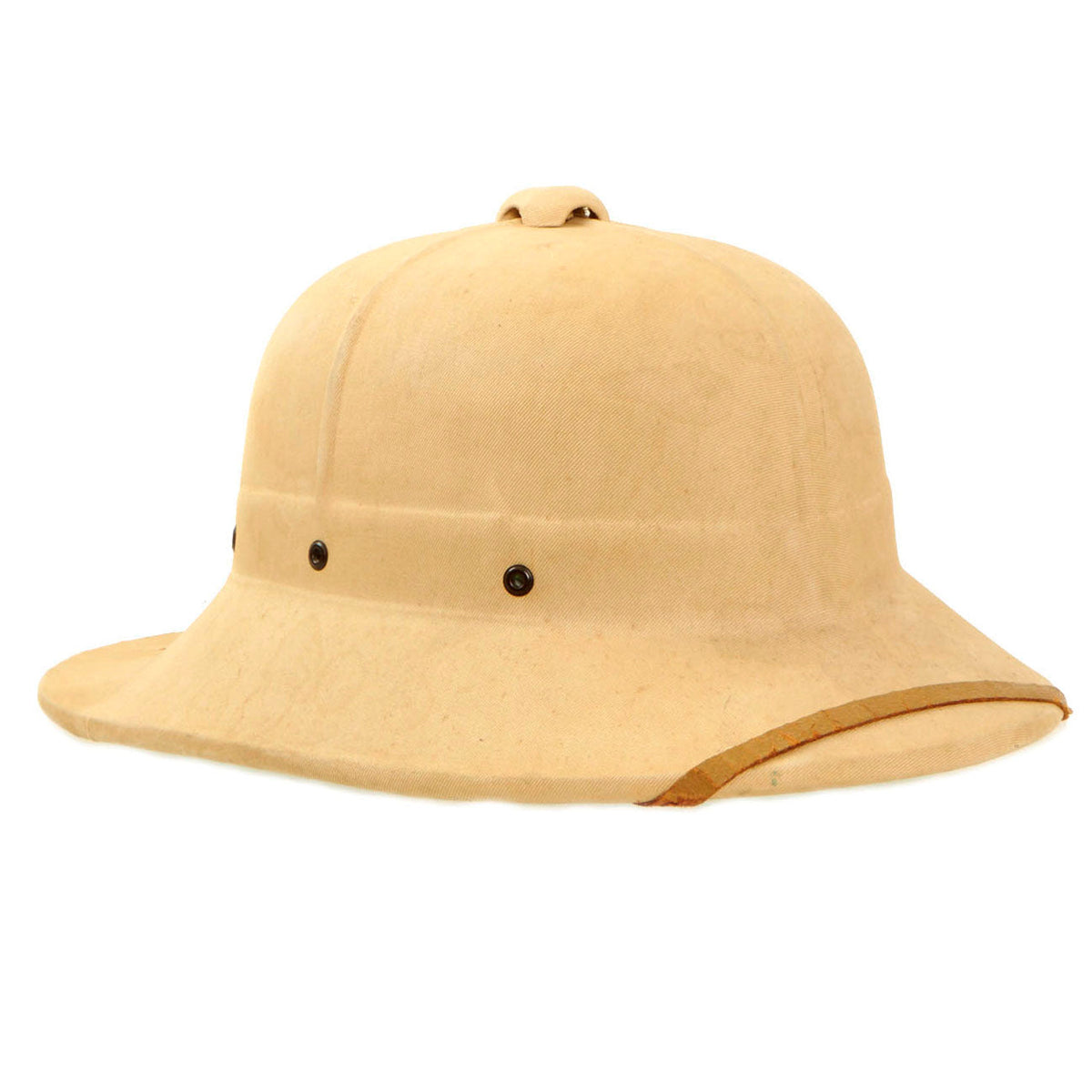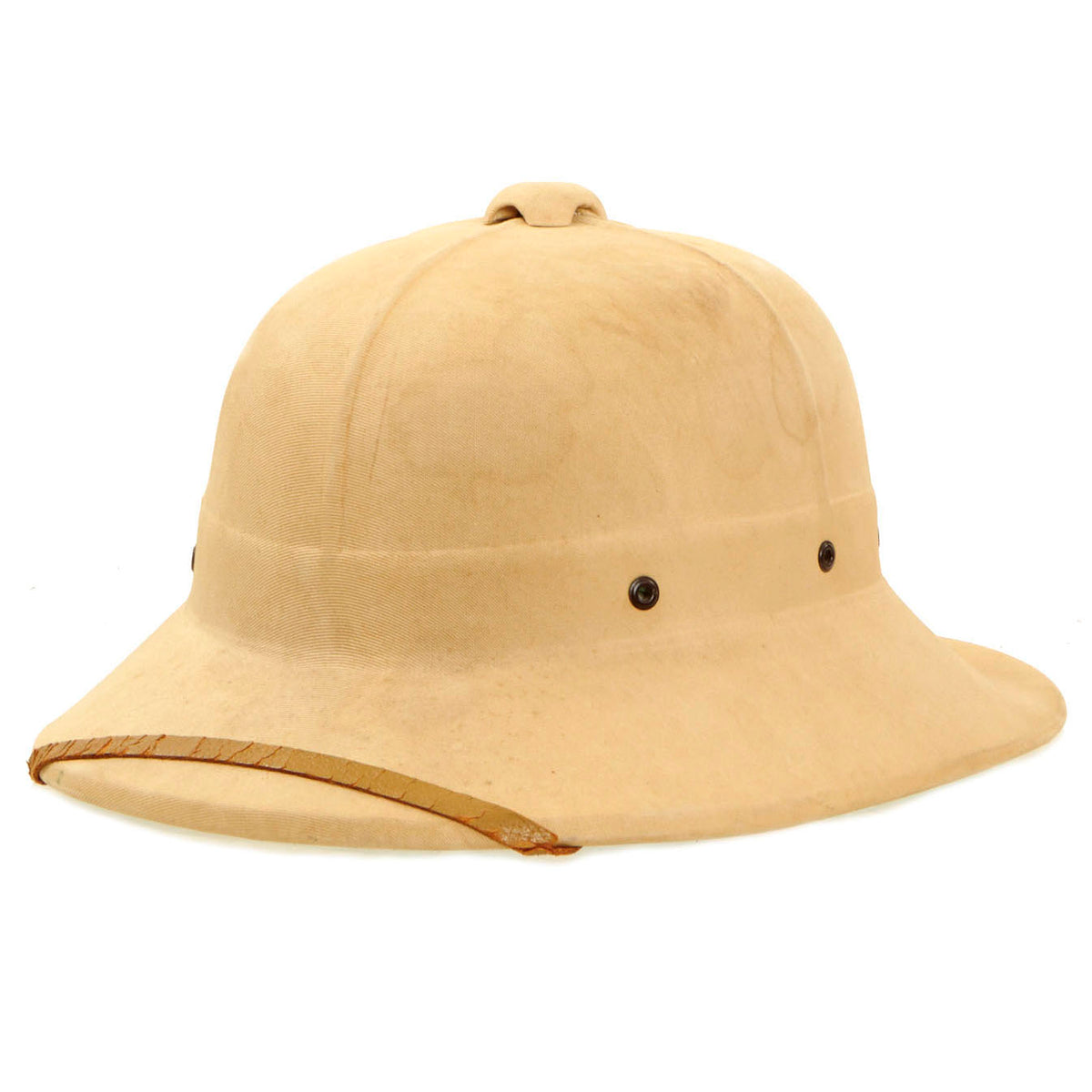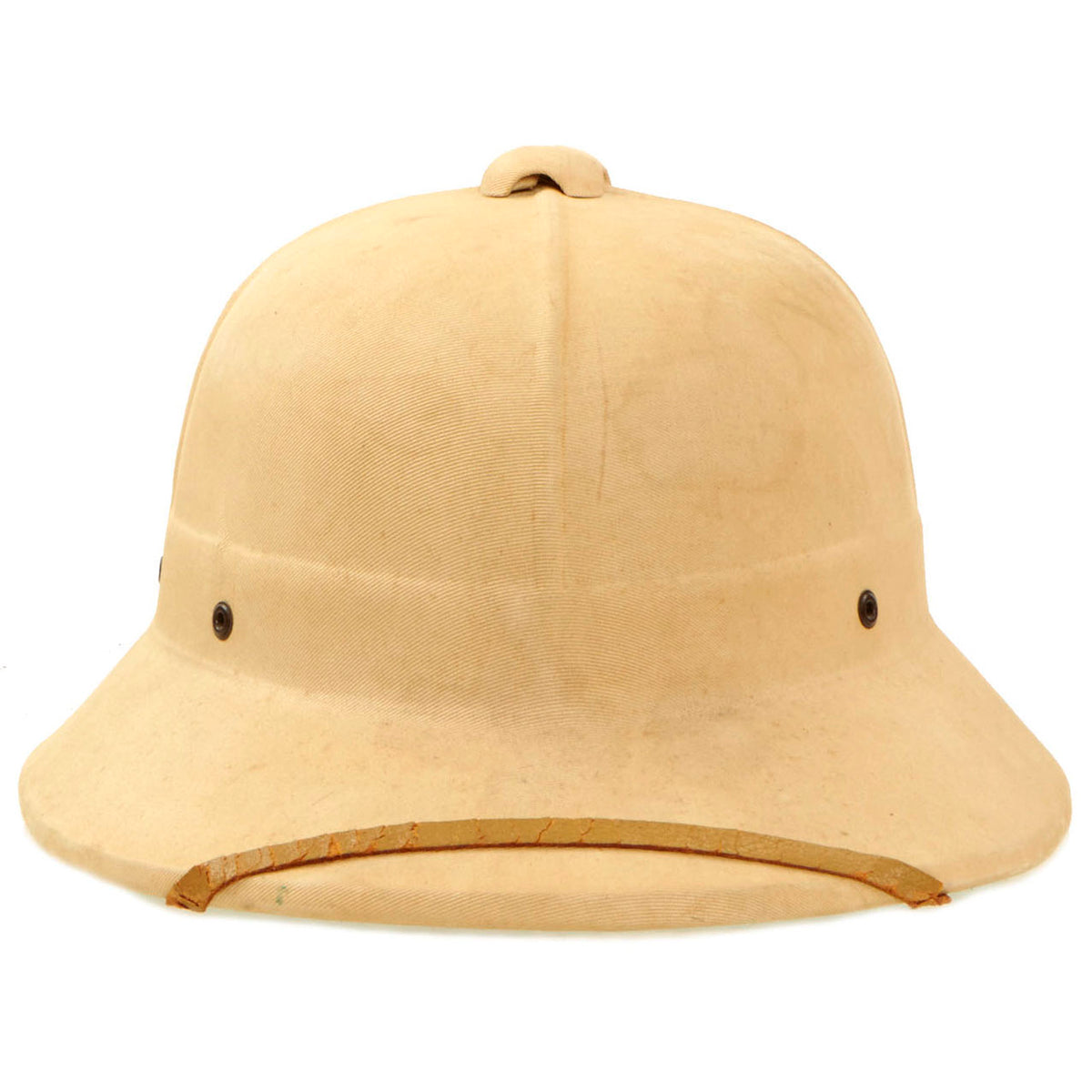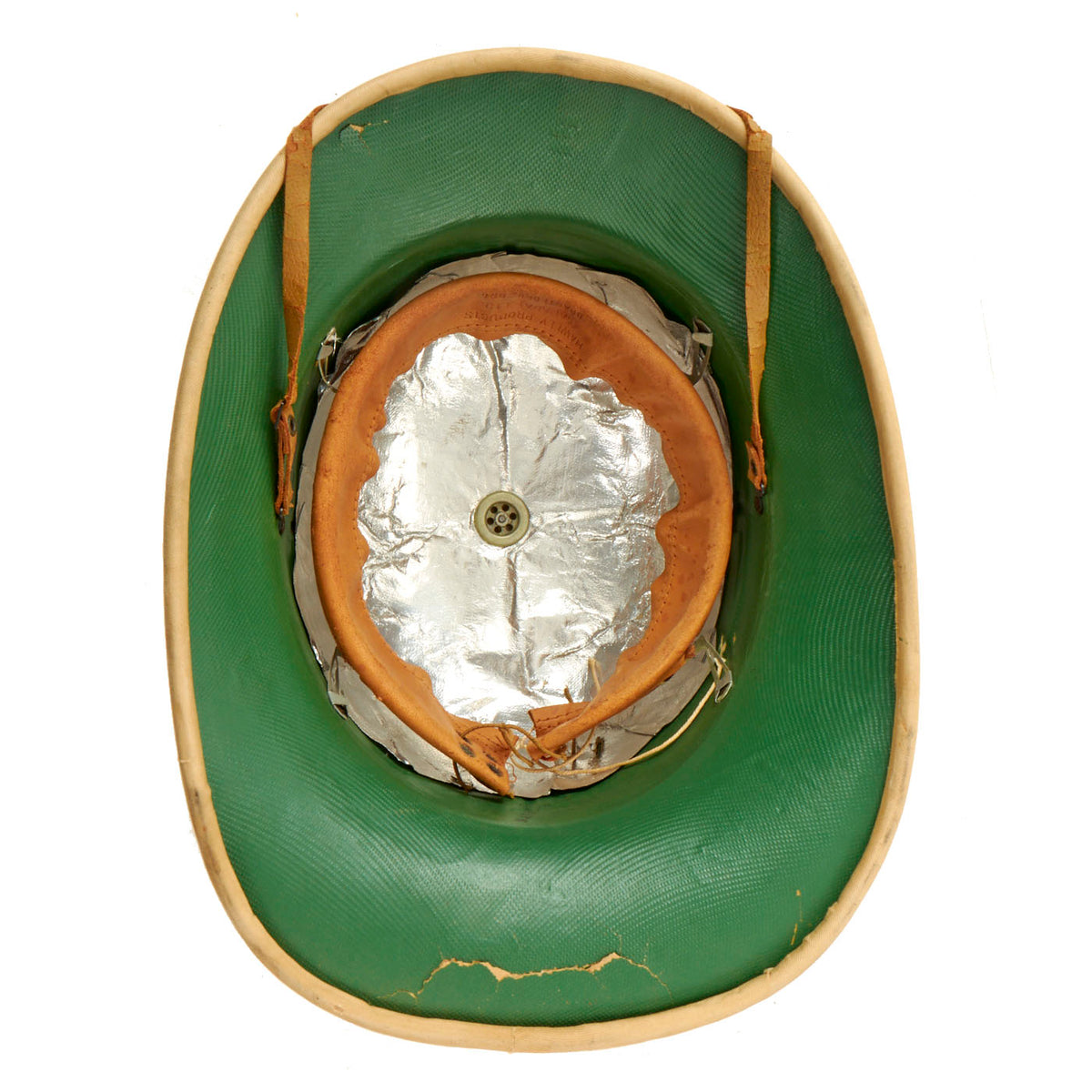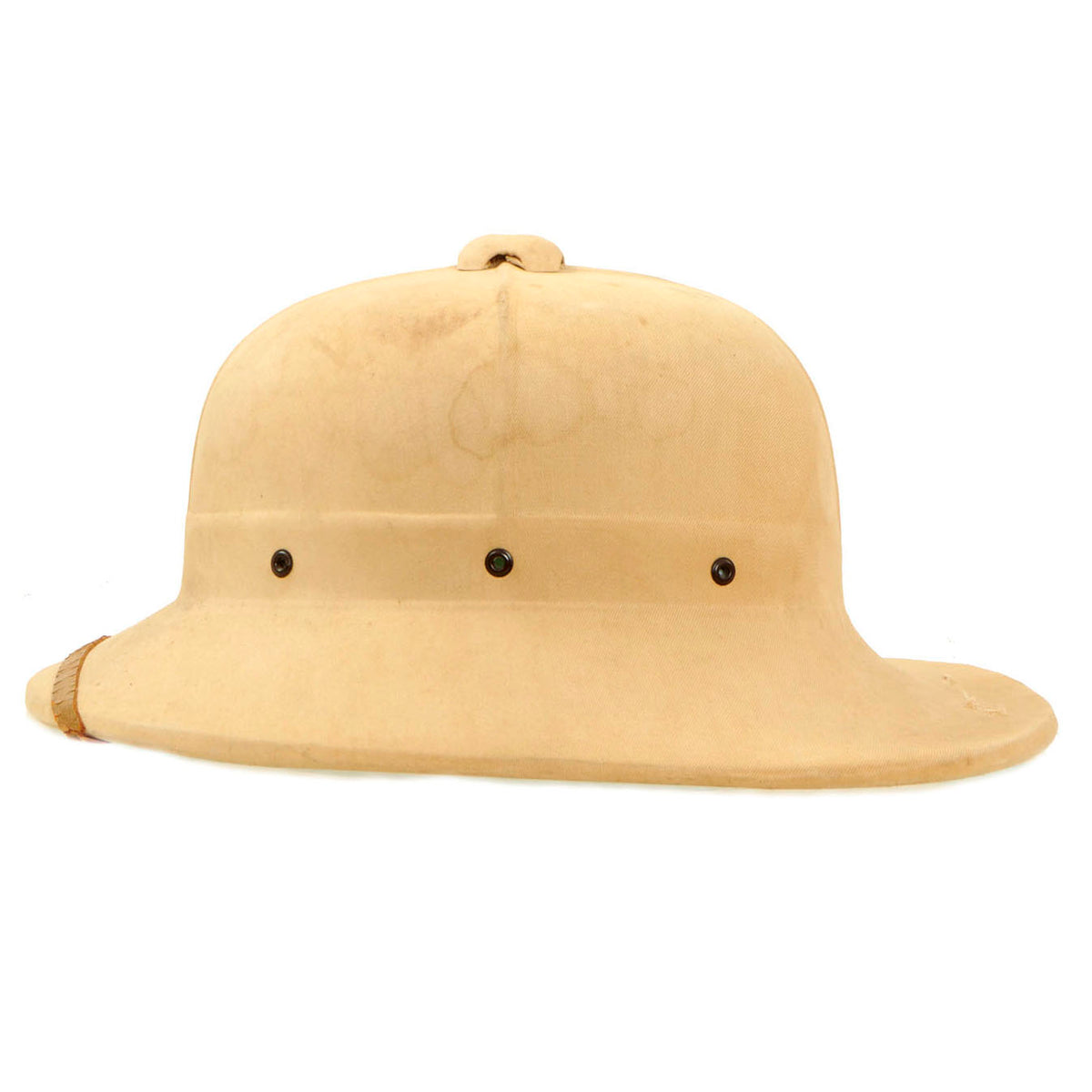Original Canadian WWII Naval Wolseley Pattern Fiber Pressed Pith Helmet by Hawley Products of Canada Original Items
$ 225,00 $ 90,00
Original Item: Only One Available. This beautiful Canadian Pith Helmet features a shape similar to the classic Wolseley. It is a pressed fiber helmet that retains a leather chinstrap, was not produced with a faux puggaree but has a removable ventilator – that latter feature is unique among pressed fiber helmets. This helmet also features aluminum fabric inside, which was used in British Wolseley pattern helmets beginning in the 1930s. To date this use of foil hasn’t been seen in the other naval pattern helmets, suggesting this helmet’s designers “borrowed” ideas from other helmets.
There is no date stamp on the helmet, based on the use of the foil and the attached (rather than the removable) leather chinstrap we suspect it is from the late 1930s or possibly a wartime helmet. This could be an experimental pattern that may have been considered as a cost-saving measure to produce the naval helmets.
During the war cork was in short supply and the Wolseley helmets were constructed of pressed felt. Felt may not have been ideal for use aboard ships, so perhaps this was developed as an alternative.
The leather sweatband is marked:
Most notably, the company is remembered for its World War II military helmets and helmet liners used by soldiers in the United States Army, Marines, and Navy. Hawley Products is the original designer of the M1 steel helmet liner. The company is also one of the two original manufacturers of the M1 steel helmet liner, alongside General Fiber Company. Additionally, Hawley Products designed and manufactured several versions of the pressed fiber military sun helmet used by the US military during World War II. The military continued to use this sun helmet throughout most of the 20th century, including Naval personnel during the Persian Gulf War.
The Canadian Army acquired the “fiber” helmets prior to the outbreak of the Second World War for summer training as a substitute for the more expensive and fragile Wolseley helmet.
The chosen supplier was the United States based manufacturer Hawley Inc., which also supplied the pressed fiber sun helmets to the United States Marine Corps, United States Army and United States Navy. The demand from Canada was apparently so great that a Canadian factory was set up.
The condition is about what you would expect of a service warsun helmet made by Hawley Fiber. Over the years, just like with the Hawley M1 helmet liners, the material degrades and becomes brittle. The rear skirt has some cracking visible as well as a small spot on the front brim. The cracks are nothing too extensive and the helmet, as far as we can tell, is complete. The chinstrap does display some surface cracking, but it is still in one piece with its original buckle.
This is a wonderful example of a seldom seen Canadian Hawley Products WW2 Naval pith helmet. Comes ready to display!
Pith helmet
The pith helmet also known as the safari helmet, sun helmet, topee, sola topee, topi, salacot, or salakof, is a lightweight cloth-covered helmet made of sholapith. The pith helmet originates from the Spanish military adaptation of the native salakot headgear of the Philippines.
It was often worn by European travelers and explorers, in the varying climates found in Southeast Asia, Africa, and the tropics, but was also used in many other contexts. It was routinely issued to European military personnel serving overseas in hot climates from the mid-nineteenth to the mid-twentieth century.
Fast Shipping with Professional Packaging
Thanks to our longstanding association with UPS FedEx DHL, and other major international carriers, we are able to provide a range of shipping options. Our warehouse staff is expertly trained and will wrap your products according to our exact and precise specifications. Prior to shipping, your goods will be thoroughly examined and securely secured. We ship to thousands clients each day across multiple countries. This shows how we're dedicated to be the largest retailer on the internet. Warehouses and distribution centres can be located throughout Europe as well as the USA.
Note: Orders with more than one item will be assigned a processing date depending on the item.
Before shipping before shipping, we'll conduct a thorough inspection of the items you have ordered. Today, the majority of orders will be delivered within 48 hours. The delivery time will be between 3-7 days.
Returns
The stock is dynamic and we cannot completely manage it because multiple stakeholders are involved, including our factory and warehouse. So the actual stock may alter at any time. It's possible that you may not receive your order once the order has been made.
Our policy is valid for a period of 30 days. If you don't receive the product within 30 days, we are not able to issue a refund or an exchange.
You can only return an item if it is unused and in the same state as the day you received it. You must have the item in its original packaging.
Related products
Uncategorized
Uncategorized
Uncategorized
Uncategorized
Uncategorized
Armoured Fighting Vehicles of the World: AFVs of World War One (Hardcover Book) New Made Items
Uncategorized
Uncategorized
Australian WWII Owen MK1 Machine Carbine SMG Custom Fabricated Replica with Sling Original Items
Uncategorized
Uncategorized
Uncategorized
Uncategorized
Uncategorized
Uncategorized
Uncategorized
Uncategorized
Uncategorized
